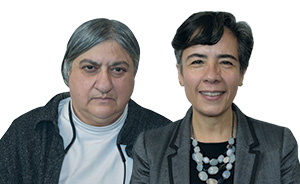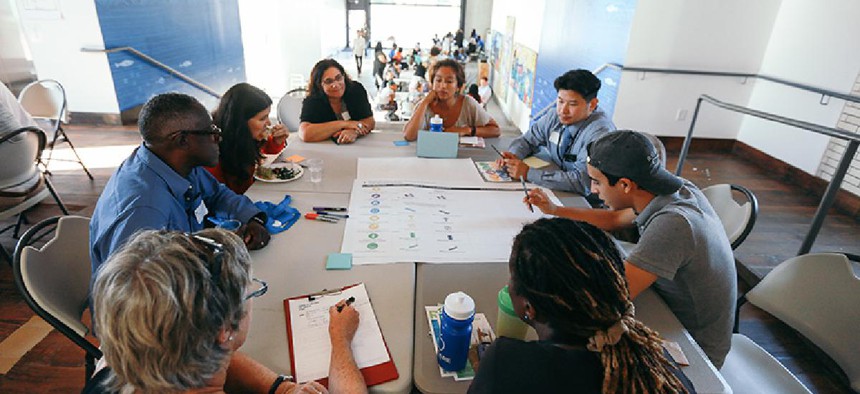The New York City Department of Health and Mental Hygiene’s Take Care New York 2020 blueprint went directly to community leaders and asked about their priorities for improving the health of all New Yorkers. New York City First Deputy Health Commissioner Dr. Oxiris Barbot and the Rev. Terry Troia of Project Hospitality, a Take Care New York 2020 grant recipient, joined us to talk about the blueprint’s community engagement process.
NYN: Why did you look to get the community more involved with this project?
OB: The reason for this reboot, if you will, is to really focus on the fact that health is really more than just going to the doctor and eating fresh fruits and vegetables. Health is affected by things such as transportation, violence, all of those sorts of things. We knew that we needed to get community engagement in a way that we hadn’t before to customize what approaches we would have for different communities.
RELATED: Confronting fear in your own community
NYN: What kinds of nonprofits were you looking for with this RFP?
OB: We knew that we needed community organizations that had long-standing track records as being anchors in their communities and having the credibility and the track record for having gotten stuff done. Beyond that we were looking to focus in areas of the city where where we saw the greatest disparities in infant mortality, premature mortality and residents’ reports of their own health. We weren’t necessarily looking for community-based organizations that were focused on health. We were taking all comers, but those were the two main criteria that we were looking for.
 NYN: Rev. Troia, what did your community engagement process look like?
NYN: Rev. Troia, what did your community engagement process look like?
TT: It was an amazing experience for us. We reached out to elected officials, to city and state agencies, to find out what resources they knew existed in the community and who their contacts were in the communities we were assigned to develop and to serve. We also walked the streets, I went to every house of worship in the two neighborhoods – Port Richmond and Mariners Harbor – myself over a two-month period. We discovered three food pantries that nobody knew even existed – had never been documented anywhere – that were serving hundreds of people. We did asset mapping, which was a tool that we learned from this process from the Department of Health and through the asset mapping we were able to develop a resource guide. Then bringing people around the table was an amazing experience. We had different language bases to cover, different cultures. We had different ethnic foods to bring people to the table. What a great and vast mix of race and culture, ethnicity, faith traditions. We were all at the table together.
NYN: What did you hear in conversation with your community?
TT: People got up and started telling their stories about how they can’t afford their strips for diabetes testing and how they were hit on the head while standing waiting for the bus by somebody. And how they were robbed and their purse taken while walking on the street. Different stories. I thought access to primary care was going to be their No. 1 issue, but it turned out to be violence, and mental health was second by one vote. And people themselves, in telling the stories, began to see the connections. They said, “that man that took my purse, he needs mental health help.” Or, “that man that hit me over the head, he needs mental health help.”
NYN: What kinds of interventions will be used to address the needs that have been unearthed?
OB: We compiled a number of documents for the eight community-based organizations that were ultimately chosen. We put it all together and said, if you choose to go down these routes, these are the potential evidence-based interventions that you can choose from, or you can come up with what you think is going to be most appropriate for your community. I have to really admit that going into this process, it was a leap of faith for us and there are many people in the health department who looked at me and said, aren’t you scared? What if they come up with something that we’re not into, that we don’t have the expertise in? We’re not used to not being experts. And I was like, that’s great, that’s exactly what we want! Because part of what we as the health department can do is provide the linkages to those experts, be they in other city agencies, be they in academic institutions. That’s part of how we want to do business differently. It’s about how can the health department help build capacity in communities building on the strengths of existing community based organizations so that we all become stronger in the process and that we meet our ultimate goal of having healthier communities and most importantly, reducing that equity gap.
NEXT STORY: Seabrook is back, and he wants his money


